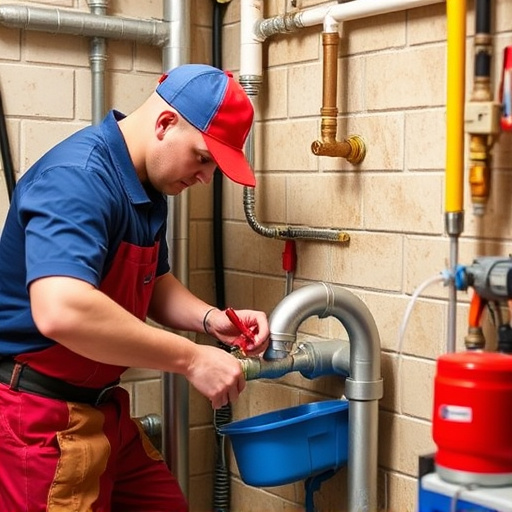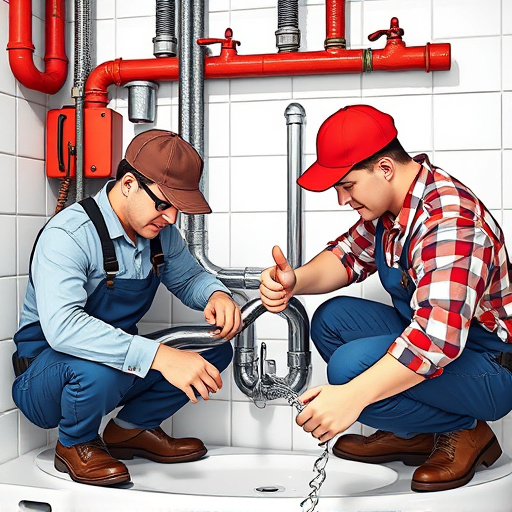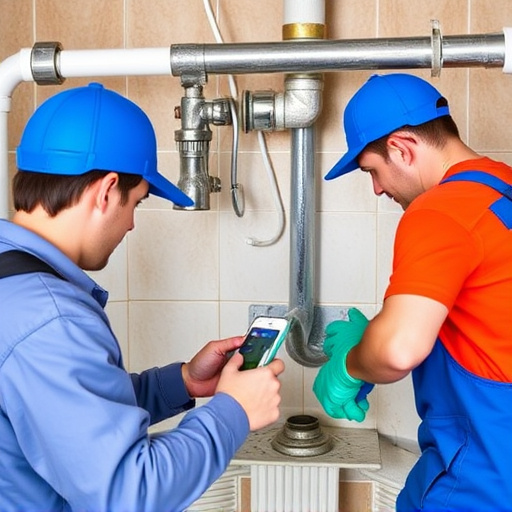Albury prioritizes clean water and resident safety with comprehensive backflow prevention devices, including reduced pressure devices (RPDs) and check valves. These solutions block contaminated water from flowing back into the main supply, mitigating health risks in both residential and commercial settings. Proper installation, regular maintenance, and adherence to local regulations by licensed professionals are crucial for maintaining Albury's reliable and safe water system.
Albury residents and businesses rely on a reliable water supply, ensuring safety and quality. This is where backflow prevention devices play a vital role, protecting the city’s water systems from potential contamination. This article delves into the essential understanding of these devices, their types, and the comprehensive guide to implementing and maintaining them. Albury’s unique water landscape demands proactive measures, and this guide ensures residents are equipped to navigate and safeguard their water sources effectively.
- Understanding Backflow Prevention Devices: Their Role and Types in Albury's Water Systems
- Implementing and Maintaining Backflow Prevention: A Comprehensive Guide for Albury Residents and Businesses
Understanding Backflow Prevention Devices: Their Role and Types in Albury's Water Systems

Backflow prevention devices play a crucial role in protecting Albury’s water systems from contamination and ensuring the safety of its residents. These devices are designed to stop harmful substances from flowing back into the main water supply, preventing potential health risks and water quality issues. In the dynamic landscape of Albury’s plumbing infrastructure, understanding these devices is essential for maintaining a robust and secure water network.
There are several types of backflow prevention mechanisms available, each tailored to specific applications. For instance, backflow preventer valves are commonly installed in residential and commercial properties to safeguard against cross-contamination. These devices operate by blocking the flow of water in one direction while allowing normal water supply in the opposite way. Additionally, special backflow protection systems are employed in industrial settings where the risk of chemical or biological contaminants entering the city’s water system is higher. By employing these diverse backflow prevention solutions, Albury continues to uphold its commitment to delivering clean and safe water to its community.
Implementing and Maintaining Backflow Prevention: A Comprehensive Guide for Albury Residents and Businesses

In Albury, implementing and maintaining backflow prevention devices is a crucial step for both residents and businesses to ensure water quality and safety. These devices are designed to stop contaminated water from flowing back into the main water supply, protecting against potential health hazards and ensuring the integrity of the local water system. The process begins with understanding your specific needs, as different properties may require unique solutions based on their plumbing setups. Consulting with licensed professionals is essential for accurate assessment and installation of appropriate backflow prevention devices like reduced pressure devices (RPDs) or check valves.
Regular maintenance is equally vital to keep these devices functioning optimally. Albury residents and businesses should schedule routine inspections and testing at least once a year, as recommended by local regulations. This involves checking for leaks, ensuring proper pressure differentials, and replacing any worn-out components promptly. By adhering to these guidelines, Albury communities can actively contribute to maintaining a safe and reliable water supply, safeguarding both public health and their investments.
Backflow prevention devices play a vital role in maintaining the purity of Albury’s water systems, safeguarding both residents and businesses from potential hazards. By understanding their functions and implementing proper maintenance routines, Albury can ensure a safer and more reliable water supply. This comprehensive guide has equipped readers with the knowledge to navigate and uphold these critical safety measures.
